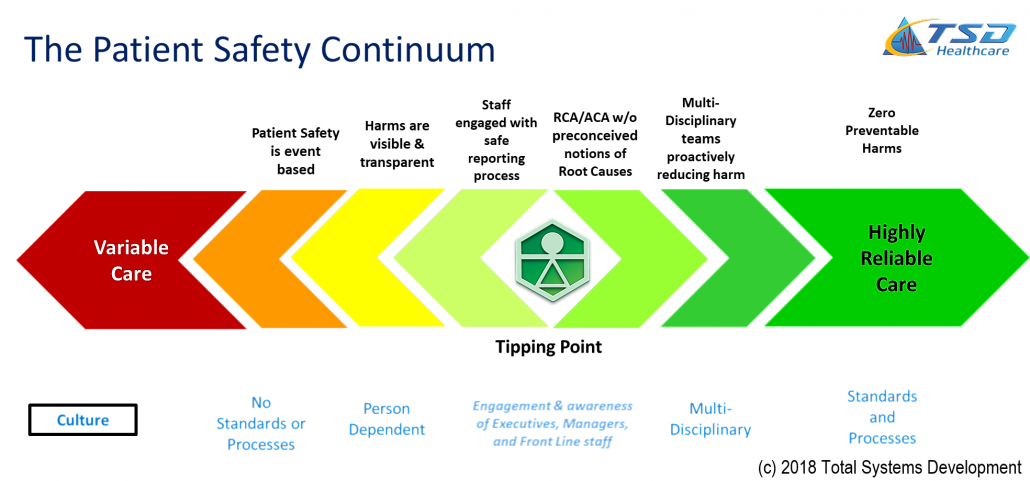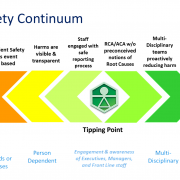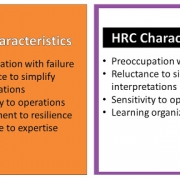
The simplest definition of patient safety is the prevention of errors and adverse effects (harms) to patients associated with health care. Although this seems so straightforward, defining and measuring what patient safety means within a facility takes on many forms and becomes confusing. By remaining so ambiguous, it hampers concerted efforts to achieve the highest levels–Zero Preventable Harms.
The first step in a facility’s journey towards Zero Preventable Harms is an accurate assessment of where the facility is in the continuum. In reference to the above continuum, there are 3 indicators to consider:
- Quality of care is the first indicator to where you are on the continuum (red to green). These are demonstrated by outcomes of care.
- The facility’s culture is the second indicator and is recognized by the variability of care and the existence (or not) of standards and processes.
- Whether or not patient safety is considered event based is the third indicator and is demonstrated by each harm event being treated either as an isolated incident or a pattern of activities.
On the positive end of the spectrum, Highly Reliable Care (HRC), has a solid foundation where caregivers are held to the same standards and processes. It is evident when patient safety reaches Zero Preventable Harms.
Of note, there is a tipping point along the patient safety continuum. This tipping point is where patient safety becomes prominent within a facility. Many facilities get stuck here, as there is still much hard work to be done. However, you know that you are at this point when all staff from the executive level to the front line have an awareness and engagement in patient safety activities. You see this when staff are engaged in reporting safety events and involved in solving the root causes of safety events without preconceived notions.
Measuring Progress
Caregivers are more inclined to participate and engage when they know where they stand. It is very important to have transparency at all levels – having a blueprint in which to measure themselves is key.
The American College of Healthcare Executives (ACHE) and the National Patient Safety Foundation partnered to create a guideline: Leading a Culture of Safety: A Blueprint for Success. The plan outlines 6 key domains to measure, that helps leaders break down priorities and focus on fine-tuning a few pillars of change at a time. The evolving road to patient safety requires a plan for longevity and transparency.
The Six Domains
| Vision: Establish a compelling vision aligned with mission for safety. Trust, Respect and Inclusion: Demonstrating throughout organization. Board Engagement: Select, develop, and engage your Board with meaningful metrics. Leadership Development: Accountability for safety starting with the CEO. Just Culture: Implement and foster. Behavior Expectations: Accountability. |
In summary, achieving a culture of patient safety with Zero Preventable Harms is possible, and requires a facility to have a solid framework which includes a way to assess current culture, measure progress (transparency), and to have a blueprint for achieving success. TSD’s Highly Reliable Care (HRC) program is here to assist your facility in your journey. Achieving Zero Preventable Harms IS possible, let us show you how. Please visit us at TSDhealthcare.com if you have any question or would like to provide any feedback.




Leave a Reply
Want to join the discussion?Feel free to contribute!